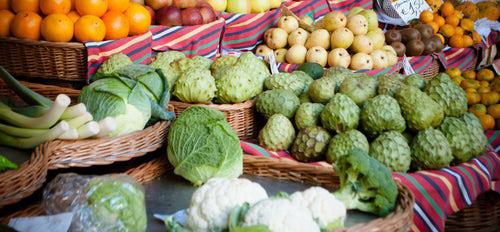
Towards better health
Written by Cherie Rivas
Our children are so full of amazing potential…. each of them with their own unique talents and special gifts to bring to this world…. but the unfortunate and undeniable truth is though, that our ever-increasing sedentary lifestyles, are not only putting our own health at risk, but also the health (and longevity) of our children’s.
Statistics now show that between 25-50% of obese children, and as high as 75% of obese adolescents will become obese adults!
As loving, responsible parents, how then can we ensure that our children don’t fall victim to the obesity epidemic and risk a whole range of weight related illnesses and even an early death?
Here’s 5 easy ways to activate your kids towards better health:

Get Up and Active!
Maintaining good levels of regular physical activity is really important for both physical and mental health…. in children, teens and adults alike.
What’s considered physical activity? Any activity that increases breathing and makes the heart beat faster could be considered physical activity. Ideally it would also include moving as many joints as possible through their full range of motion as well.
It’s recommended that kids and teens should accumulate at least 60 minutes of moderate to vigorous intensity exercise every day, and where possible, up to 3 hours each day will result in even more health benefits!
Moderate intensity physical activities will require some effort, but speaking throughout the exercise should still be possible. This may include activities such as bike riding, brisk walking and active play.
Vigorous Intensity physical activities will require a lot more effort, and will typically require some ‘huff and puff’. This may include running, chasing and sports like football and netball.
Where possible, parents should also aim to be physically active at a moderate intensity for at least 5 hours each week. As positive role models we should always demonstrate a positive attitude to being physically active!

Set Limits and Switch Off!
TV’s, phones, devices, gaming consoles and computers…. sitting in front of them for hours every day quickly increases our total sedentary time!
What is sedentary time? This can be considered any time that is spent ‘still’, either sitting or lying down (other than actual sleeping time). It typically increases during peak learning periods at school, when travelling and during leisure time. Adults are often sedentary at work, if their jobs are desk or computer bound.
Sedentary behaviour has been associated with poorer health outcomes, including overweight and obesity in children and teens, and the increased risk of type 2 diabetes in adults.
It’s recommended that screen time for kids and teens is limited to 2 hours per day, and where possible, long periods should be broken up with spurts of physical activity in order to combat the sitting time.
If you know the kids get ‘lost’ in their screens, be extra vigilant in getting them moving and if need be, use an activity tracker or alarm clock to remind you of the predetermined time limits.
Pick Up Some Perfect Produce! (Easy Ways)
Fresh fruits and vegetables contain an array of essential vitamins, minerals, antioxidants and dietary fibre…. all of which support growth, development, boost vitality and reduce the risk of chronic illnesses.

To ensure that your kids and teens receive the full range of nutritional and medicinal benefits, always try to enjoy the full range of colour categories:
- Red
- Purple/blue
- Orange/yellow
- Green
- Brown/white
These 5 distinct colour categories contain their own unique blend of disease fighting phytochemicals. Encourage your children to enjoy 1-2 serves of fruit and approximately 5 serves of vegies each day (this varies depending upon the age of the child or teen).
Fruit is the perfectly packaged ‘convenience snack’, and where possible, try to include vegetables at every meal.
Shut Down the Sugar Drinks! (Easy Ways)
Water is by far, the best way to quench your thirst, hydrate your body’s cells and support your natural detoxification processes.
Avoid sugar sweetened drinks such as soft drink, flavoured mineral waters, juices, energy drinks, iced tea and sports drinks because they're all high in calories but low in nutrition.
In fact, a can of soft drink can contain up to 10 teaspoons of sugar, which increases the risk tooth decay, poor appetite, excess weight gain and spikes in blood glucose levels (which inevitably results in a post-sugar crash).
Fruit juices are high in sugar too! Whilst they will provide some nutrition, they are often low in dietary fibre and are very easily consumed, and thus contribute to weight gain.
As parents, we can make sure that sugary soft drinks aren’t made available in the home and that water bottles and/or jugs remain topped up in the fridge. Fruit juices can also have water added to them to ensure that sugar consumption remains minimal.
Be a Savvy Snacker! (Easy Ways)
Contrary to popular belief, including a range of healthy snacks into the regular eating pattern can be a really effective way to:
- Support nutritional requirements during growth spurts,
- Supplement ‘nutritional gaps’ in the standard daily eating pattern, &
- Assist in the maintenance of a healthy body composition (ratio of lean muscle tissue to body fat).
Planned snack breaks are also a great way to avoid overeating at the next meal and by staving off hunger, your kids and teens are generally going to be far less likely to reach for the poorer quality snack options.
The simplest way to ensure that your children and teens make the smartest snack choices is not to purchase overly processed commercial varieties such as crisps, biscuits or confectionary, in the first place. Instead, pre-prepare healthy snack options such as fruit, unsalted nuts, yoghurt, wholegrain bread or crispbread, popcorn or vegetables such a carrot sticks or cherry tomatoes.



